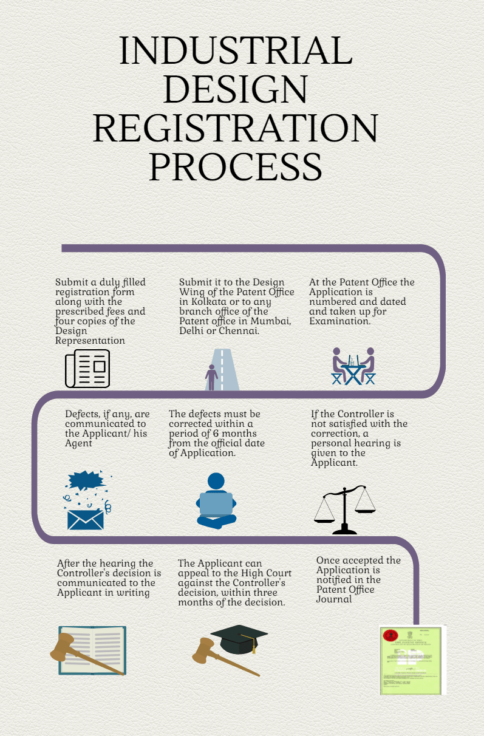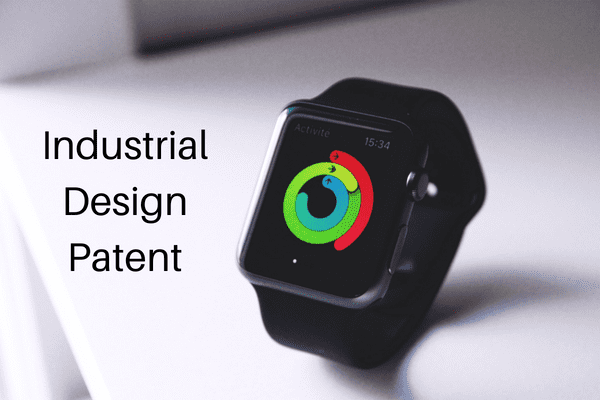Industrial Design Patent in India
Design Definition:
According to the Designs Act, 2000 an Industrial Design is defined as “the features of shape, configuration, pattern or ornament or composition of lines or color or a combination thereof applied to any article whether two dimensional or three dimensional or in both forms, by any industrial process or means, whether manual, mechanical or chemical, separate or combined, which in the finished article appeal to and are judged solely by the eye.”
Simply put, a design is the overall visual appearance of the product that is unique to the product. The shape, combination of colors, composition of lines, and the like may render the uniqueness of the appearance. The critical point is that the design must be capable of being applied to an article. Therefore, the design cannot exist in the abstract; it must be applied to a two-dimensional or a three-dimensional article.
Why register a design patent?
Design enhances the aesthetic value of a product. Most consumers base their purchase decisions on how a product looks. Given the importance design has on consumers’ decision-making, it is only fair to protect original and unique designs by conferring their right to use on the creators. Even if the design of a product is copied, it can harm the business of the creator of the design.
What are the requirements for registering a design patent?
The Designs Act, 2000, lists the following requirements to be met before a design can be registered:
1. Novelty– the design should be original and cannot be published or used in any country. However, an existing design on a new subject matter can be registered.
2. It should be applied to an article, excluding industrial plans or layouts from registration as designs.
3. The design should be applied to an article by an industrial process, excluding paintings and sculptures that are not produced in bulk by an industrial process from registration.
4. The design should be visible in the final article, and this is because the design is judged solely by the eye.
5. In Any mode of operation, a mechanical device cannot be registered.
6. Design cannot include a trademark, property mark, or artistic rights defined under the Copyright Act 1957.
What are the rights conferred by the registration of a design patent?
Registration of a Design confers on the owner copyright to use the design for the article for which it was registered. This, in effect, means that the owner has an exclusive right to use the design for the article under which it was registered. Any registered design infringement confers the owner’s right to sue the infringer for damages.
Thus, registering a design is vital to protect the appearance of your product. An important point to note is that an article must have its existence independent of the design. This means that even if the design is not applied to the article, the article can continue to exist. Thus, stamps, labels, and the like cannot be considered articles for registering designs.
Design Patent Registration Process in India
The application for an industrial design patent can be filed by the Applicant himself or by a professional employed by the Applicant for this purpose.
 Below is a list of the comprehensive steps involved in registering a Design in India:
Below is a list of the comprehensive steps involved in registering a Design in India:
Step 1. Submit a duly filled-in design registration form with the prescribed fees along with four copies of the representation of the Design (of size 33cm x 25cm with reasonable margins). The drawing should depict the features of the design from all the views and state the view.
Step 2. The application,n along with the required document,s must be submitted to the Design Wing of the Patent Office in Kolkata or any branch office of the Patent Office in Delhi, Mumbai, or Chennai.
Step 3. On receipt of the application in the Patent Office, the application is numbered, dated, and taken up for examination. (Please note that, unlike a Patent, there is no need to file a separate request for examination. Design Applications, once filed, are automatically taken up for examination).
Step 4. If any defects are noticed in the application, they are communicated to the Applicant or agent.
Step 5. The defects must be corrected within six months from the official date of application.
Step 6. If the defects are not rectified, as required by the Controller, a personal hearing is provided to the Applicant. The Controller’s decision after the hearing is communicated in writing (stating reasons) to the Applicant or his Agent.
Step 7. The Applicant can appeal to the High Court (within three months from the date of the Controller’s decision)
Step 8. Once accepted, the application is notified in the Patent and Design Journal.
Duration of design protection in India:
The duration of design protection in India after its registration is valid for ten years from the date of design patent registration. This term is extendable for a further five years by applying for an extension along with the prescribed fee.
[cherry_button text=”Need Design Registration? Reach Experts!” style=”info” centered=”yes” fluid_position=”right” icon_position=”top” bg_color=”#418bcc” color=”#ffffff” min_width=”33″ target=”_blank”][/cherry_button]




